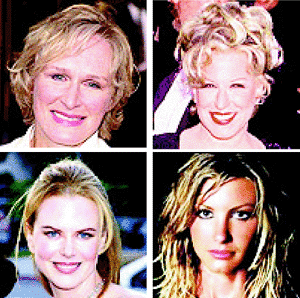EW
Is James Taylor the coolest uncool guy ever? On the scene at Carnegie Hall’s 120th anniversary with Taylor, Sting, Bette Midler, Bill Clinton(!) and more
by Maggie Pehanick
Last night, those fortunate to be on the New York fundraiser circuit (or fledgling EW reporters) were treated to an intimate concert at Carnegie Hall headlined by none other than the king of soft folk-rock himself, James Taylor.
Taylor was there to help the famous venue, founded in 1871, was celebrating 120 years of being NYC’s premier concert hall by welcoming back some of its most famous performers. The roster included Bette Midler, (Carnegie debut, 1972) Steve Martin, (1971) Barbara Cook, (1961) Dianne Reeves, (1989) and Sting (1991).
While the gala crowds at the Carnegie last night probably wouldn’t be defined as musical trailblazers, they did love them some James Taylor. By the time the musician strode out at about a quarter past 7 p.m., the house as packed. I didn’t check the rafters to see if people were hanging from them, but I wouldn’t have been surprised if some ball-gowned “Country Road” enthusiasts had sneaked their way past security.
Though Carnegie Hall is one of the most prestigious venues in the city, the stage set was simply understated, with a piano on the left and a drum set on the right, (a trumpeter here, a violinist there). Upon arrival, Taylor, in a tailored suit and an electric-blue tie, grabbed his guitar and cut straight into a stripped-down version of “There’s No Business Like Show Business.” If that man’s voice can’t make baby seals cry, I don’t know what could.
In addition to performing some of his greatest hits–“Sweet Baby James,” “Carolina in My Mind,” “How Sweet It Is”–Taylor served as the night’s MC, taking the audience on a verbal tour of Carnegie’s musical evolution; it was like story time with Uncle James.
Among the genres represented, the performers highlighted folk, jazz, Broadway, comedy and pop. First up was a disarmingly fabulous-looking Midler, who belted out Creamer and Layton’s “After You’ve Gone” and in true theatrical manner, Rosenblatt’s “My Yiddishe Mama.”
Coming from someone who hasn’t dusted off her Midler records in quite some time, let me tell you, the broad sounds great. Though it must be noted that the integrity of her bedazzled little black dress was questioned when Broadway legend Barbara Cook appeared in a floor-length gold-splattered coat minutes later.
After a shout-out to singer/social activist/audience member Harry Belafonte, (Carnegie Hall alum, class of ’59 and ’60), MC Uncle James introduced “banjo playin’ fool” Steve Martin. Martin (in a classy brown suit) and James continued on to play the most intriguing banjo performance since Deliverance stopped cycling on AMC.
As the show progressed, Midler and Martin came out on numerous occasions to assist with the timeline, but it was jazz vocalist Dianne Reeves, with a powerful rendition of Billie Holiday’s classic “Don’t Explain,” who received the first standing O of the night. And from one end of the performance spectrum to the other, comedian Kevin Pollack gave an equaling entertaining (but, you know, in a different way) impression of an excerpt from Lenny Bruce’s 1961 Carnegie Midnight Concert. It was better than his Christopher Walken, I’ll tell you that much.
For this reporter, the highlight of the night, aside from Uncle James lovingly supervising the performers from his perch by the drum set, was undoubtedly the British Invasion. By that, I mean a skinny jean-clad Sting, who came out and sang a swoon-worthy, Sting-ified version of The Beatles’ “Penny Lane.”
But WAIT–who’s that? Former President Bill Clinton?
“You’re probably wondering why I’m here,” he said.
Yep.
He made a quip about representing all the artists who always wanted to come to Carnegie Hall but were never quite good enough–then launched into a speech about the importance of culture and music to growing children. Oh, Bill, why must you taunt us? We know you can play!!
After a surround-sound (courtesy of the Young People’s Chorus of New York) rendering of “Shower The People,” Taylor ended the show with the anthem that he associates most with Carnegie Hall, Judy Garland’s “Somewhere Over the Rainbow.” And thus, the sun set on Uncle James’ Carnegie evening.
Now, I’m not positive when it happened, but somewhere between the ”˜70s, when my Dad was in college and allegedly broke all of his friend’s “wussy” Taylor records while definitely not drunk, and 2009, when Taylor made a deliberately crude cameo as himself in Judd Apatow’s Funny People, it became cool for the younger set to like James Taylor again. I, for one, am positive I’m not the only one of the under 40-set who’s eyes prickle at the sound of “Fire and Rain.” And I own it.
Were you there, readers? Do you agree?







